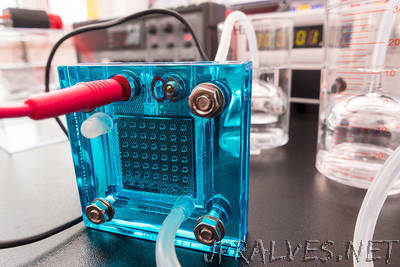
“Imagine revolutionizing the renewable energy market with the silica gel packets you find in shoeboxes and snack bags. The research team behind Membrion is working to do just that. Developed by chemical engineering researchers Greg Newbloom (PhD ‘14) and Weyerhaeuser Endowed Associate Professor Lilo Pozzo, the Membrion technology seeks to innovate battery storage with a lower cost, improved battery membrane that uses silica gel. And, the team says, they couldn’t be doing it without the support of partners on and off campus committed to advancing alternative energy research, innovation and commercialization. Membrion, which incorporated in March 2016, won this year’s Buerk Center for Entrepreneurship’s Business Plan Competition as well as the competition’s “Best Idea for the Future” award. Newbloom is founder and CTO of the new company; he and Pozzo recently spoke with us about their emerging technology, its entrepreneurial journey and where they hope to take it next. Explain to us what Membrion is and how it will affect the renewable energy market. GN: Renewable energy, like solar or wind energy, is great but it’s not always available on demand. For example, if you want to watch T.V. after dark, you can’t rely on direct solar power. So, to provide on-demand power, renewable energy is stored in batteries. To store a lot of energy, you need a lot of really big batteries — this is often referred to as “grid-scale” storage. Flow batteries are the ideal choice for grid-scale energy storage, but they tend to be very pricy in large part due to their complex polymer membranes. This is where Membrion is changing things: We’re making membranes from silica gel instead. It’s more durable, less expensive, and will yield better performance overall. Our goal is to make batteries affordable and efficient so that renewable energy becomes an even more accessible and desired source to power communities worldwide.”
